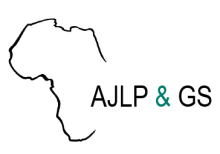Resource information
Context and background:
Urban green areas are critical in generating community social, economic, environmental, and health advantages. However, clear and reliable data on the spatial extent, distribution, accessibility, and attractiveness of green spaces and parks in the three African cities (Addis Ababa, Kumasi, and Musanze) are severely lacking. As a result, the study sought to map and appraise the distribution of existing green spaces and parks, as well as investigate their attractiveness and physical and economical accessibility to various communities.
Goal and objectives:
The study aimed to know the distribution and status of existing green spaces, investigate the physical and financial accessibility of recreational parks to different communities in Ad-dis Ababa (Ethiopia), Kumasi (Ghana) and Musanze (Rwanda) cities.
Methodology:
Green spaces were mapped using satellite imagers (Sentinel-2 and Landsat 8). A structural plan and Google Earth Pro were used to digitize parks. A questionnaire, focus group discussions, Key Informant Interviews (KII), an in-depth desk study, and field observations were used to collect aspatial data. ArcGIS 10.8.2 and SPSS 26 software were used to analyze the data.
Results:
The findings demonstrate that existing green spaces and parks are unevenly dispersed across cities, making it difficult for some visitors and communities to use them physically. Some of the parks were difficult to enter due to high entrance prices. Green area per capita in Addis Ababa, Kumasi, and Musanze is 9.7 m2, 13.6 m2, and 7.5 m2, respectively. This suggests that Musanze city does not meet the World Health Organization's required green space per capita (9 m2/person). Poor collaboration, a deficient land management system, encroachment, a lack of community participation, and the conversion of green spaces to commercial and residential uses all impede the management and extension of green spaces and parks. Even while some parks were accessible to vulnerable populations, no explicit effort was made to promote inclusivity in the design or provision of auxiliary services.


